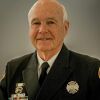Fireworks season for 2021 is here. Although July 4 is clearly the key day in this season, some people use fireworks for many days or weeks leading up to or after Independence Day, and still others use fireworks all the way from Memorial Day through Labor Day. Regardless of what constitutes fireworks season, the statistics on fires, deaths and injuries related to fireworks are staggering.
The Consumer Product Safety Commission (CPSC), the Centers for Disease Control and Prevention (CDC) and the NFPA each have a part in tracking data, or in some measure, regulating the safety of the fireworks we manufacture, import or sell in the United States. And we, as firefighters, must deal firsthand with the results of fireworks that are misused or result in a failure that kills, maims or injures.
Two events from 2020 shed light on the dangers of fireworks: 1) the maiming of a youth and injury to his companion in Ohio after they found a discarded commercial firework in an alleyway and attempted to light it off, and 2) the report that 12 New Mexico firefighters were injured, two seriously, as they were packaging fireworks in a storage area for an upcoming July 4 display.
Fireworks: Big business and confusing regulations
Fireworks are big business, estimated at $3 to 5 billion just in retail sales annually. Factor in those venues that regularly use commercial fireworks, such as amusement parks, and that number grows considerably larger. The purchase of fireworks are regulated by state, and therefore the regulations on the possession, transportation and use of fireworks by individuals varies with each state. This is part of the problem with fireworks – what may be banned in one state might be easily obtained in an adjacent state, exacerbating the whole question of “legal” fireworks.
For example, in Ohio there are only 53 licensed, inspected and registered locations where retail fireworks can be purchased by individuals. The number of locations is set by law, and they must be a fixed, fully sprinklered building, designed and built with the approval of the State Fire Marshal’s Office. Ironically, Ohio law does not permit the discharge of fireworks anywhere within the state except by a licensed pyrotechnician who is subject to testing, a background check, and continuing education requirements to possess, transport or discharge their fireworks.
To circumvent the Ohio law, an individual must only sign an affidavit, known by all as the “liar’s clause,” saying they will immediately transport their retail fireworks out of state where they will legally discharge them. Clearly, state regulation alone is not a complete answer.
Compare Ohio with other states that allow retail sales in a variety of locations, from an empty store in a high-traffic shopping mall to a canvas-tent setup in a vacant lot. Many civic or charitable groups, including some fire departments needing additional funding to operate, sell fireworks during the summer since it is a highly sought product with an attractive profit margin.
Fireworks-focused standards
No matter where your state or your jurisdiction falls on this legal fireworks spectrum, fireworks remain an issue for which the fire service must be ready to deal with the consequences. Every department should be familiar with both NFPA 1123: Code for Fireworks Displays and NFPA 1124: Code for the Manufacture, Transport and Storage of Fireworks and Pyrotechnic Articles.
NFPA 1123 deals primarily with the types of fireworks for display (i.e., retail or commercial) and the distances from spectators that must be maintained for them to be discharged and for spectators to safely observe the fireworks display. It also discusses the construction and types of the mortar tubes and the types of ignition (i.e., hand-fired, electric squib) that can be used, along with the safety checklist needed for either or both. It also discusses how each public display needs to be inspected by a fire inspector or fire chief who is certified in the fireworks safety checklist.
NFPA 1124 should be used by that inspector or chief to see that any firework being transported into their jurisdiction is marked with the proper Department of Transportation (DOT) plaque and is maintained away from any sources of ignition. Finally, if the fireworks are being stored on location, such as for a multi-night fireworks display, NFPA 1124 indicates what type of vault and locks are acceptable considering the size of the fireworks being stored.
Fireworks injury and death statistics
Regardless of whether you are a fireworks fan, there is no denying the scary statistics surrounding fireworks accidents and injuries. Based on NFPA statistics, we can expect over 18,500 fires caused by fireworks in the 30 days from June 20 to July 20. Of those, 1,500 will be structure fires and 300 vehicle fires, with a loss of over $ 21 million. Sixteen thousand will be “outdoor fires,” including several hundred forest fires given the tinder-dry conditions in some areas of the country.
Additionally, the CDC indicates that there will be approximately 11,000 injuries requiring a hospital visit or stay, mostly for serious burns or hand injuries. And 28% of these injuries will be from sparklers that burn in excess of 1,200 degrees F – the favorite firework of young children who are the age group mostly likely to be their victims.
The number of fireworks-related deaths have varied over the years, but normally there are typically about 25 or more during fireworks season. Many of these are the results of the structure fires caused by fireworks.
Prepared before, during and after fireworks season
In short, we as firefighters need to be prepared before, during and after fireworks season and especially during a public fireworks display in our own area. Ensure that you are familiar with the fireworks standards, NFPA 1123 and 1124, so that you are educated about fireworks use and can enforce these standards in your community.
Stay safe!
This article, originally posted on June 17, 2019, has been updated.



